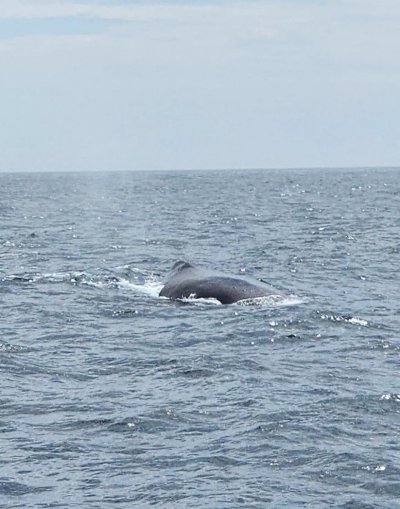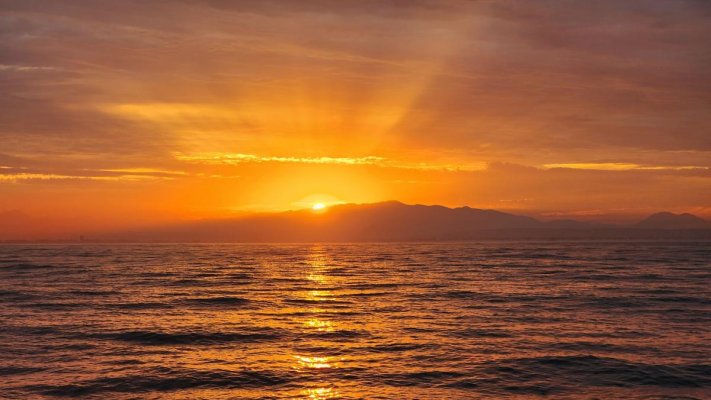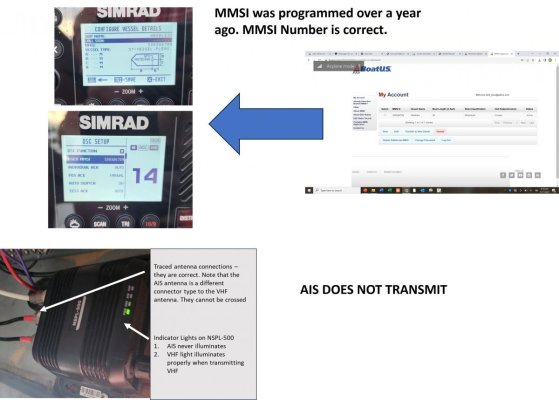mvweebles
Guru
- Joined
- Mar 21, 2019
- Messages
- 7,319
- Location
- United States
- Vessel Name
- Weebles
- Vessel Make
- 1970 Willard 36 Trawler
It’s 4am at the San Diego Guest Dock and the sea lions are bellowing. Planned departure to return to Ensenada is 5AM. Goal for the 5-day, 65-nm run up and back was for a longer sea trial and to knock the dust off our cruising skills. Yesterday, we spent the day running into San Diego Bay along the city front and anchored three times (re-anchoring twice). Turns out much of San Diego is gooey mud. Launched the dinghy once.
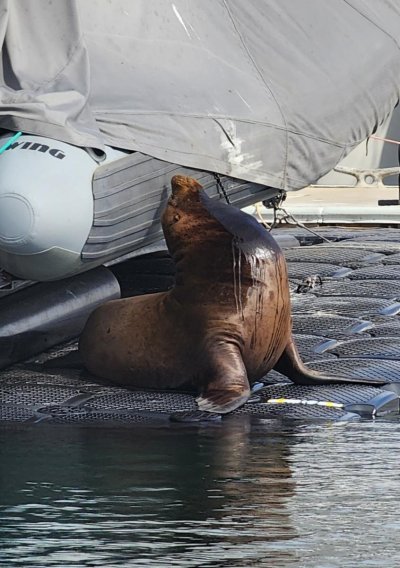
Anchoring in San Diego on a nice Saturday is great spectator sport. One 40-ish foot Clorox-bottle boat spent 45-minutes trying to get their puny anchor to snare something before giving up and moving on (pic attached). I watched several boats drag in the fresh breeze.
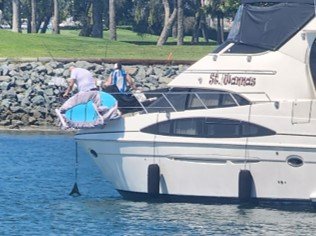
Friday was spent with a good friend who happens to be a crackerjack mechanic. He helped with two issues: First, my Northern Lights 6kw generator; and sorting through my dual Balmar alternator setup.
Alternators: Honestly, not sure I even have a problem. But I really need to fine-tune the settings on my entire system, including solar. Part of the challenge is I have not stress-tested the system with deeper discharges from full inverter reliance. I am not too concerned – my friend gave me some excellent pointers on troubleshooting the system.
Generator. I’ll have to dig-out the old TF thread on this, but I had a dead AVR (Auto Voltage Regulator). Northern Lights said mortality rate on these are extremely low and, when I sent pictures of the junction box wiring, they said it had clearly been messed with (true). So they would not warranty the AVR, an $800 item. My Mexico electrician cobbled-together an aftermarket AVR which works fine, but I was still unsure if the NL AVR was actually dead. Thanks to my friend, I now know: It is toast. A replacement OEM/NL AVR is difficult to source so I’ll run the $20 aftermarket for a while. I have come to the conclusion that some work just should not be attempted in a foreign land - basic electrics are fine. Anything Balmar or Victron or LFP are a bridge too far, and least right now.
Calibrating the A/P. A good part of yesterday was futzing with the Simrad MFD system. The challenge I have with stuff like this is finding the right menu. Most frustrating is stumbling upon an adjustment, then later realizing that you need to make a change and not being able to re-find the menu. When I was delivering, I knew these setup routines like the back of my hand. Turns out the knowledge was highly perishable. But I do remember an important mindset: for heavier, displacement style boats, the settings often need to be retarded (slowed) versus advanced, which can be counter intuitive.
Weather for today’s run: There is a storm developing several hundred miles west of Baja that seems to be influencing weather. Forecast for today is 4-6 feet from the SW at 10-seconds so will have about the same head seas as we did on the way up 5-days ago. Uphill both directions.
Peter

Anchoring in San Diego on a nice Saturday is great spectator sport. One 40-ish foot Clorox-bottle boat spent 45-minutes trying to get their puny anchor to snare something before giving up and moving on (pic attached). I watched several boats drag in the fresh breeze.

Friday was spent with a good friend who happens to be a crackerjack mechanic. He helped with two issues: First, my Northern Lights 6kw generator; and sorting through my dual Balmar alternator setup.
Alternators: Honestly, not sure I even have a problem. But I really need to fine-tune the settings on my entire system, including solar. Part of the challenge is I have not stress-tested the system with deeper discharges from full inverter reliance. I am not too concerned – my friend gave me some excellent pointers on troubleshooting the system.
Generator. I’ll have to dig-out the old TF thread on this, but I had a dead AVR (Auto Voltage Regulator). Northern Lights said mortality rate on these are extremely low and, when I sent pictures of the junction box wiring, they said it had clearly been messed with (true). So they would not warranty the AVR, an $800 item. My Mexico electrician cobbled-together an aftermarket AVR which works fine, but I was still unsure if the NL AVR was actually dead. Thanks to my friend, I now know: It is toast. A replacement OEM/NL AVR is difficult to source so I’ll run the $20 aftermarket for a while. I have come to the conclusion that some work just should not be attempted in a foreign land - basic electrics are fine. Anything Balmar or Victron or LFP are a bridge too far, and least right now.
Calibrating the A/P. A good part of yesterday was futzing with the Simrad MFD system. The challenge I have with stuff like this is finding the right menu. Most frustrating is stumbling upon an adjustment, then later realizing that you need to make a change and not being able to re-find the menu. When I was delivering, I knew these setup routines like the back of my hand. Turns out the knowledge was highly perishable. But I do remember an important mindset: for heavier, displacement style boats, the settings often need to be retarded (slowed) versus advanced, which can be counter intuitive.
Weather for today’s run: There is a storm developing several hundred miles west of Baja that seems to be influencing weather. Forecast for today is 4-6 feet from the SW at 10-seconds so will have about the same head seas as we did on the way up 5-days ago. Uphill both directions.
Peter



